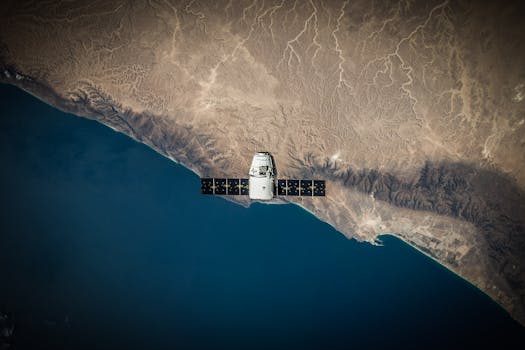
MEO Satellites: The Future of Global Connectivity with Medium Earth Orbit
MEO satellites, or Medium Earth Orbit satellites, are a type of satellite that operates at an altitude of around 2,000 to 36,000 kilometers above the Earth’s surface. This orbit is higher than Low Earth Orbit (LEO) satellites but lower than Geostationary Orbit (GEO) satellites. MEO satellites are gaining popularity due to their unique benefits and applications, which make them an attractive option for various industries, including telecommunications, navigation, and Earth observation.
The use of MEO satellites offers several advantages over traditional GEO satellites. One of the primary benefits is the lower latency, which is the time it takes for a signal to travel from the Earth’s surface to the satellite and back. MEO satellites have a latency of around 20-30 milliseconds, compared to GEO satellites, which have a latency of around 250-300 milliseconds. This makes MEO satellites ideal for real-time applications such as voice and video communications, online gaming, and financial transactions.
Applications of MEO Satellites
MEO satellites have a wide range of applications across various industries. In the telecommunications sector, MEO satellites are used to provide broadband internet services, mobile network connectivity, and voice communications. They are particularly useful in areas where terrestrial infrastructure is limited or non-existent, such as remote or underserved communities. MEO satellites can also be used to provide backup connectivity during natural disasters or network outages.
In the navigation sector, MEO satellites are used to provide location-based services, such as GPS, GLONASS, and Galileo. These satellites use a network of MEO satellites to provide accurate location information and timing signals, which are essential for various applications, including aviation, maritime, and land transportation.
In the Earth observation sector, MEO satellites are used to collect data on the Earth’s surface and atmosphere. They can be used to monitor climate change, track weather patterns, and detect natural disasters such as earthquakes and hurricanes. MEO satellites can also be used to monitor agricultural activity, detect deforestation, and track ocean health.
Benefits of MEO Satellites
The use of MEO satellites offers several benefits, including global coverage, high-speed connectivity, and low latency. MEO satellites can provide coverage to remote or underserved areas, where terrestrial infrastructure is limited or non-existent. They can also provide high-speed connectivity, with data rates of up to 1 Gbps, making them ideal for applications such as online gaming, video streaming, and cloud computing.
MEO satellites are also more resistant to interference and jamming, compared to LEO satellites. This makes them a more secure option for sensitive applications, such as military communications and financial transactions. Additionally, MEO satellites have a longer lifespan, typically ranging from 10 to 15 years, compared to LEO satellites, which have a lifespan of around 5-7 years.
Challenges and Limitations of MEO Satellites
While MEO satellites offer several benefits, they also have some challenges and limitations. One of the primary challenges is the high cost of launching and operating MEO satellites. The cost of launching a MEO satellite can range from $100 million to $500 million, depending on the size and complexity of the satellite. Additionally, MEO satellites require more powerful transponders and antennas, which can increase the cost and complexity of the satellite.
Another challenge is the limited availability of MEO spectrum. The MEO frequency band is limited, and the allocation of spectrum is tightly regulated by international authorities. This can make it difficult for new entrants to access the MEO market, and can limit the growth of existing MEO satellite operators.
Finally, MEO satellites are also subject to interference from other satellites and terrestrial systems. This can affect the performance and reliability of MEO satellites, and can require additional measures to mitigate interference and ensure smooth operation.
In conclusion, MEO satellites are a vital component of the global satellite industry, offering a range of benefits and applications across various sectors. While they have some challenges and limitations, the use of MEO satellites is expected to continue to grow, driven by increasing demand for global connectivity, high-speed data services, and low latency communications.






